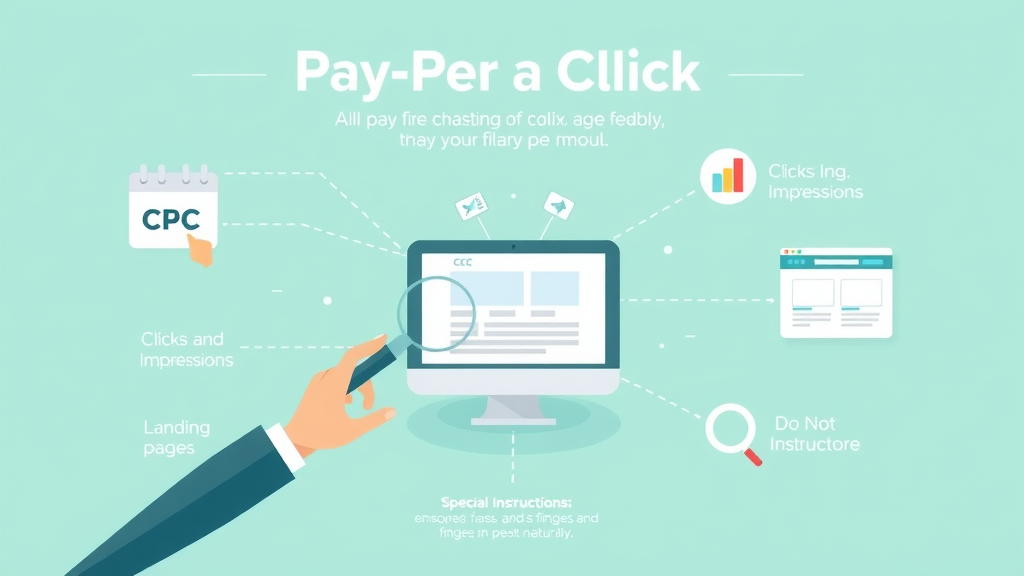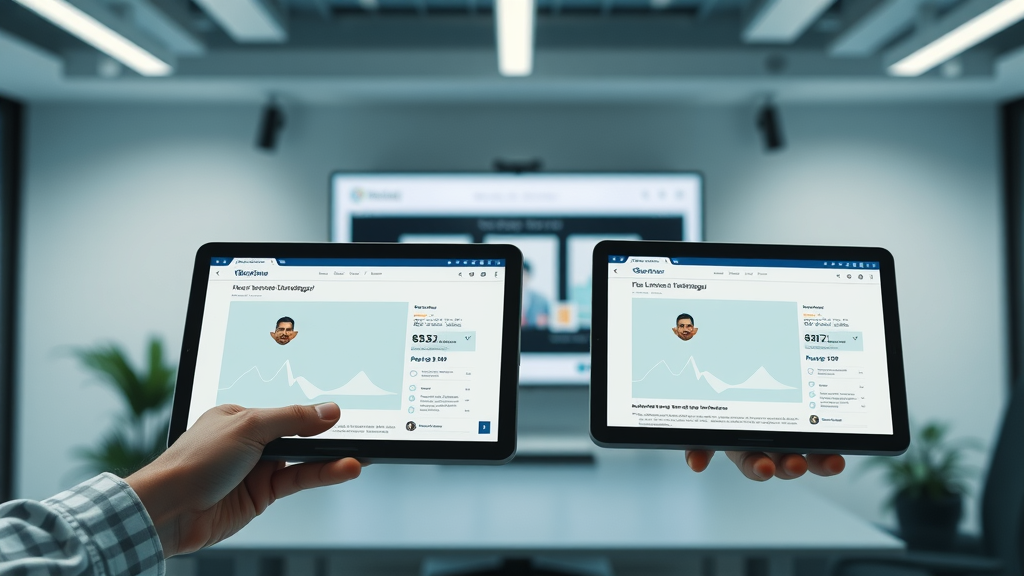Think you’re wasting money on digital ads? Pay-per-click advertising can double your return on investment if you know where to look for hidden efficiencies and actionable hacks. Buckle up, because you’re about to uncover the best PPC advertising tactics for lowering cost per click, optimizing ad groups, supercharging Quality Scores, and converting clicks into real business growth. With proven strategies and expert advice, this guide ensures you don’t just spend – you win.
Unlocking ROI Potential: Why Pay-Per-Click Advertising Is the Secret Weapon for Digital Marketers
In today’s competitive digital economy, pay-per-click advertising stands out as one of the most direct ways to drive traffic and capture motivated leads ready to purchase. Unlike traditional online advertising or organic methods, PPC advertising puts your brand front and center on the search engine results page (SERP), targeting people precisely when they’re searching for products or services like yours. That means every dollar spent on a ppc ad can become a revenue-generating engine—if managed wisely.
For digital marketing professionals and business owners aiming for predictable, scalable returns, the secret to PPC’s power lies in its transparency and flexibility. With the right approach, you control your spend, reach, and message, while continuously refining campaigns to hit your target audience and business goals. Importantly, strategic use of ad groups, negative keyword filters, and optimized landing pages ensures you don't just attract more clicks—you attract the right clicks that turn into conversions.

"Did you know that businesses make an average of $2 for every $1 spent on pay-per-click advertising? Yet, without the right approach, most leave money on the table."
The Fundamentals of Pay-Per-Click Advertising: Understanding the Basics
At its core, pay-per-click advertising is a digital advertising model where businesses pay a set cost per click every time someone clicks on their ad. Unlike display ad impressions, which focus on visibility, PPC ensures you only pay when a user actively engages by clicking through to your landing page or website. This strategy sharply contrasts other digital marketing methods, such as organic SEO or social media, because it promises measurable, immediate results and direct attribution for your ad spend .
But what sets pay-per-click advertising apart? For starters, platforms like Google Ads and Bing Ads use intricate algorithms—considering keywords, ad relevance, and Quality Score —to match your ppc ads with the most suitable audience. Your ad shows up when real people search for your exact keyword or topic on search engines . Factors like your landing page experience and bid amount determine how high your ad ranks and what you actually pay for valuable new visitors.
- Defining pay-per-click advertising
- Distinguishing pay-per-click advertising from other digital marketing tactics
- The role of cost per click, quality score, and landing pages
- Why businesses of all sizes use PPC ads

What You'll Gain from Mastering Pay-Per-Click Advertising Strategies
When you master pay-per-click advertising , you gain far more than website visits—you unlock the power to control costs and outmaneuver competitors. Grasping expert PPC advertising strategies not only lets you reduce your cost per click but also ensures you construct high-converting ad groups that drive relevant site traffic and meaningful actions.
Implementing these insights transforms your approach from guessing to data-driven decision-making. By optimizing ad relevance , leveraging negative keywords, and continually improving your landing page and ad experience, you’ll enjoy sustainable business growth and a robust ROI that can be tracked and scaled over time.
- Clear strategies for reducing cost per click
- Steps to build effective ad groups and ppc campaigns
- Techniques to increase conversion rates and maximize ROI
- How to leverage PPC advertising for sustained business growth
Quick Comparison: Google Ads vs. Other Click Advertising Platforms
Choosing the right platform can make or break your PPC ad strategy. While Google Ads dominates with high-intent traffic and the largest reach, alternatives like Bing Ads and Facebook Ads offer unique advantages for specific business goals and audiences. Understanding the trade-offs in cost per click , targeting flexibility, and audience volume is essential for maximizing your digital marketing ROI and limiting unnecessary ad spend.
| Platform | Avg. Cost Per Click | Pros | Cons |
|---|---|---|---|
| Google Ads | $1.00 - $2.00 | High Intent Traffic, Wide Reach | Competitive, Potentially Higher Costs |
| Bing Ads | $0.50 - $1.50 | Lower CPC, Less Competition | Smaller Audience |
| Facebook Ads | $0.97 | Highly Targeted, Rich Demographics | Not Purely Intent Based |

How Cost Per Click Impacts Your Pay-Per-Click Advertising Results
Your cost per click (CPC) is the lifeblood of ppc advertising efficiency. It determines how many prospects you can attract for your budget and directly shapes your overall ROI. A high CPC can cut into profits, while a low CPC lets you reach more people, test ad creatives, and capture valuable leads for less. That’s why the top digital marketers constantly analyze CPC data and tweak campaigns to achieve the best outcome.
Understanding the relationship between theme alignment, ad group quality , and landing page specificity will enable you to gain better control over your ad spend . Businesses that focus on refining their ad groups and regularly reviewing their keywords routinely see their CPC decrease without sacrificing reach or lead quality.
Analyzing Cost Per Click Trends in 2024
As we progress into 2024, the cost per click landscape is shifting. Increasing competition—especially in high-value industries such as legal, home services, and e-commerce—means CPCs can fluctuate daily. Automation and smart bidding strategies from platforms like Google Ads are bringing average costs down for those who use them wisely, while less-optimized PPC campaigns may find themselves paying a premium. Keeping an eye on market trends, including seasonality and industry shifts, is key to staying ahead.

Strategies for Lowering Cost Per Click Without Sacrificing Reach
Lowering your cost per click doesn’t have to mean shrinking your results. One proven way to reduce CPC is by building tightly themed ad groups and using highly relevant ad copy. This increases your Quality Score , which directly influences how much you pay for each click. Adding negative keywords, optimizing your landing page for conversions, and using data-driven bidding also keep costs in check while expanding your campaign’s reach.
Automated bidding strategies and detailed geo-targeting let you adjust your bids when and where your audience is most likely to convert—giving you more value per click and ensuring your PPC ad budget stretches further. Avoiding high-competition keywords in favor of long-tail alternatives is another quick win that delivers better leads for less.
Setting Up Your First PPC Campaign: A Step-by-Step Guide
Ready to launch your first ppc campaign ? Start by defining clear goals—are you aiming to increase brand awareness, capture leads, or drive sales? Next, choose your click advertising platform based on audience and budget. Once selected, craft compelling PPC ads that speak directly to your target audience's needs, using language and visuals that set you apart from your competition. Keep ad copy concise and include strong calls to action to maximize ad relevance .
Organize your ad groups by theme, product, or audience segment to maintain high Quality Scores and ensure each keyword connects with relevant ad creative and a tailored landing page . Don’t overlook the power of negative keywords to block irrelevant traffic and refine your targeting. Lastly, optimize your landing pages for conversion by simplifying design, increasing load speed, and aligning on-page messaging with user expectations set in the ad.
- Pinpointing campaign goals in PPC advertising
- Choosing your Google Ads or click advertising platform
- Crafting compelling PPC ads for your target audience
- Building high-performing ad groups
- Integrating negative keywords for smarter PPC campaigns
- Optimizing your landing page for conversion
PPC Ad Group Hacks: Optimizing Ad Groups for Pay-Per-Click Advertising Success
Successful PPC advertising hinges on precise ad group structure. Instead of grouping dozens of loosely related keywords into a single ad group, segment by search intent—separating brand, competitor, and product-specific queries into their own tightly focused ad groups. This not only improves relevance but also raises your Quality Score , which can lower your average cost per click .
Advanced strategies like dynamic keyword insertion help make your ppc ad copy even more targeted, increasing click-through rates and overall campaign performance. Avoid the common mistake of overlapping keywords or neglecting negative keywords, as these weaken your results and waste ad spend. Continually review and refine your ad groups to stay ahead of the competition and keep performance high.
- Segmenting by intent: high-ROI ad group structures
- Using dynamic keyword insertion for click advertising
- Common PPC advertising ad group mistakes to avoid

Quality Score Demystified: Critical Metrics for Pay-Per-Click Advertising Efficiency
Quality Score is the secret ingredient to unlocking lower cost per click and better ad placements in PPC advertising . Google Ads uses this 1-to-10 metric to determine the relevance of your keyword, ad, and landing page combination. The higher the score, the less you pay per click and the better your position on the search engine results page .
It pays to understand which factors drive your Quality Score. The primary elements include expected click-through rate (CTR), ad relevance, and landing page experience . By closely monitoring these and making ongoing adjustments to your ad groups and keyword choices, you can consistently lower costs and boost campaign returns.
How Quality Score Affects Cost Per Click in PPC Advertising
Your Quality Score directly impacts the cost per click you pay in your PPC campaigns . High-scoring ads are rewarded with better positions and lower CPCs, while low-scoring ones are penalized with higher costs and less visibility—even with aggressive bidding. This system incentivizes advertisers to focus on user-centric ad campaigns rather than simply outbidding competitors.
If your Quality Score slips, expect to pay more for each visitor. Frequent testing, ongoing keyword refinement, and regular auditing of your landing page experience ensure your score remains strong and your results cost-effective.
Actionable Ways to Boost Your Quality Score in Google Ads
To improve your Quality Score , ensure your ad copy directly matches your keywords and the intent of your ad group . Build out highly relevant landing pages that deliver exactly what the user expects, minimizing the distance between the search query and the conversion opportunity. Continuously optimize your ads for higher click-through rates (CTR) through A/B testing and tracking search term performance.
Remember:
"Improving your Quality Score by just 1 point can drop your cost per click by up to 16%—a margin too significant to ignore."PPC ad
Landing Page Optimization: Convert More Clicks from Pay-Per-Click Advertising
The secret weapon behind every great pay-per-click advertising campaign isn’t just the ad itself—it's a landing page crafted for conversion. The best PPC landing pages feature strong headlines, clear value propositions, rapid load times, and seamless design on all devices. Keep forms simple, reassure visitors with testimonials or trust badges, and maintain a strong visual alignment between the ad and landing page so users feel instantly at home.
Google Ads rewards well-optimized landing pages with higher Quality Scores and lower cost per click . Make sure your page provides substantial, relevant content that answers user questions and guides them toward conversion. A/B testing different layouts, copy, and headlines will help you identify what resonates most with your audience, driving more conversions for every dollar you invest in ppc advertising .
- Best practices for ppc ad landing page layout
- How Google Ads evaluates landing page experience
- A/B testing for continual pay-per-click advertising improvement

Advanced PPC Advertising Techniques: Negative Keywords, Ad Scheduling, and More
Once you’ve mastered the basics, it’s time to unlock advanced PPC advertising hacks. Using negative keyword strategies, you can filter out irrelevant traffic—ensuring you only pay for clicks with real potential to convert. Also, optimize your ad schedule and adjust bids based on the time of day or device, targeting your audience when they’re most likely to engage.
Geotargeting is another PPC superpower, focusing your ads on specific regions to boost local relevance and efficiency. These techniques, when combined, not only slash wasted spend but also hone in on high-intent prospects who are ready to act. When implemented together, negative keywords, smart bid adjustments, and precise geotargeting can dramatically improve campaign ROI and help your digital advertising stand out in crowded markets.
- Filtering out irrelevant traffic with negative keyword strategy
- Bid adjustments for high-performing times and devices
- Geotargeting for local ppc campaign efficiency

Tracking ROI: Analytics & Reporting for Pay-Per-Click Advertising
To justify your ppc ad spend and plan future campaigns, robust analytics and reporting are essential. Use tools like Google Ads dashboard, Google Analytics, or third-party PPC analytics solutions to track everything from cost per click and conversion rate to cost per acquisition and lifetime value of each customer.
Measure key metrics consistently, and create custom reports that highlight trends, spikes, and gaps in your PPC performance. The insights gained from this data allow for ongoing refinement of ad campaigns —optimizing bids, pausing underperforming ads, and reallocating budget for maximum impact on your marketing goals.
- Tools to measure click advertising performance
- Key metrics: cost per click, conversion rate, cost per acquisition
- Reporting strategies for ongoing ppc campaigns refinement

People Also Ask: Your Pay-Per-Click Advertising Questions Answered
What is pay-per-click advertising?
Pay-per-click advertising is a digital advertising model where advertisers pay a fee every time someone clicks on their ad, usually linked to search engine or social platform results. The most popular example is Google Ads , where businesses bid on keywords to appear near the top of search results. It’s a fast, measurable, and targeted way to drive traffic to your website and generate leads or sales.
Are pay-per-click ads worth it?
For most businesses, pay-per-click ads are incredibly valuable—especially if managed with clear goals, tight ad groups , and conversion-focused landing page design. Because you’re only paying when someone interacts with your ad, you can track results, optimize spend, and measure ROI directly. However, without proper management and ongoing optimization, it’s easy to overspend on low-performing clicks.
How much do advertisers pay-per-click?
The amount advertisers pay per click, or cost per click , varies widely by industry, keyword competition, and platform. On Google Ads , most industries see an average CPC of $1–$2, but competitive verticals (like legal or insurance) may be much higher. Tools like Google’s Keyword Planner can help estimate CPC for your specific keywords before you launch a campaign.
Can you make money on pay-per-click ads?
Absolutely! Many businesses and affiliate marketers use pay-per-click advertising to drive targeted traffic to their products or offers, resulting in profitable conversions. The key is ensuring that the revenue generated from each conversion exceeds the amount spent on each click—this is achieved through careful campaign optimization, keyword selection, and ongoing analytics.
Pay-Per-Click Advertising Best Practices: 12 Expert Tips to Slash Costs and Boost ROI
For long-term pay-per-click advertising success, expert marketers follow a strict set of best practices, continuously refining their strategy as the landscape evolves. Here are actionable PPC hacks to optimize every campaign dollar and consistently outperform your competitors.
- Conduct regular keyword research
- Use negative keywords extensively
- Monitor quality score and optimize ad relevance
- Test multiple ad variations in ppc ads
- Optimize landing page relevance and speed
- Utilize ad scheduling and geotargeting
- Analyze cost per click and adjust bids frequently
- Employ conversion tracking for all ppc campaigns
- Refine ad groups for tighter relevance
- Leverage remarketing and audience targeting
- Continuously review and pause underperforming ads
- Stay updated with google ads and digital marketing trends

Frequently Asked Questions About Pay-Per-Click Advertising
- What industries benefit most from pay-per-click advertising? – E-commerce, legal, financial, home services, and SaaS companies typically see strong results. Any business with a clear value proposition and defined target audience can profit from PPC advertising.
- How do ad groups and campaigns differ? – Campaigns are the overall structure controlling budget and goals, while ad groups organize specific keywords and ads within a campaign, aimed at specific themes or audiences.
- What are the key pitfalls in PPC advertising? – Common mistakes include neglecting negative keywords, poor landing page experience, broad ad targeting, and insufficient budget control or testing.
- Is Google Ads the only effective platform for PPC ads? – No. Bing Ads, Facebook Ads, and other social platforms like LinkedIn also offer highly effective pay-per-click advertising options, often with cheaper CPCs and unique targeting features.
- How does landing page experience affect Quality Score? – Google evaluates your landing page for relevance, load speed, and usefulness. A high-quality landing page boosts your Quality Score, improving ad position and lowering cost per click.
Key Takeaways for Winning at Pay-Per-Click Advertising in 2024
- Focus on lowering cost per click while increasing conversion quality
- Build tightly themed ad groups to improve ad relevance
- Leverage negative keywords and ongoing campaign optimization for best results
- Track every step for data-driven PPC advertising decisions
Ready to Grow? Book Your Free Marketing Strategy Session to Supercharge Your Pay-Per-Click Advertising Results
Ready to grow your business? Book your free marketing strategy session with our Orlando team today.
To further enhance your understanding of pay-per-click (PPC) advertising and implement effective strategies, consider exploring the following resources:
-
“Pay-Per-Click (PPC) Advertising: A Beginner’s Guide” : This comprehensive guide from DreamHost delves into the fundamentals of PPC advertising, offering insights into its cost-effectiveness and rapid results. It’s particularly beneficial for businesses aiming to maximize their advertising budgets efficiently. ( dreamhost.com )
-
“PPC Basics Explained — PPC Management for Small Businesses” : Bplans provides a detailed overview tailored for small business owners, emphasizing the advantages of PPC, such as precise budget control and transparent performance metrics. This resource is invaluable for those seeking to manage their advertising expenditures effectively while gaining clear insights into campaign outcomes. ( bplans.com )
By delving into these resources, you’ll gain actionable strategies to optimize your PPC campaigns, reduce costs, and achieve a higher return on investment.
 Add Row
Add Row  Add
Add 



Write A Comment